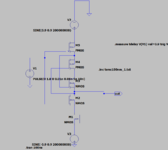Ikh1
Newbie

Hello, I have a circuit with 40+ components and multiple voltage sources. How can I calculate the total power dissipation in Ltspice? I know how to find the dissipation for individual components but is there a way to calculate it at once for the whole CMOS circuit like in pspice. Also, is there a way to get it in text instead of the waveform?


